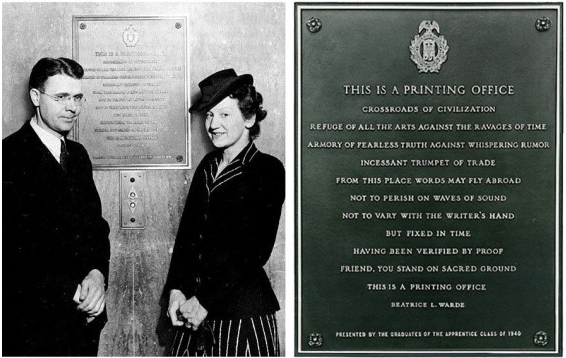Printing technology shows up rather frequently in movies, television shows, and books. Sometimes the printing press is central to the development of the character or the plot. For example, many folks will remember how a Heidelberg press used for printing counterfeit checks played a key role in the 2002 Steven Spielberg crime drama, Catch Me If You Can, starring Leonardo DiCaprio and Tom Hanks. More recently, the writing, printing, and publication of a fictitious Regency-era scandal sheet has mesmerized viewers of the Netflix series, Bridgerton. Printing is also central to the 2020 Universal Pictures film, News of the World (based on the 2016 novel of the same name by Paulette Jiles). There is an allure and historical omnipresence of printing that makes it appealing to authors and filmmakers alike.
“You Can Smell the Weight”
Heidelberg, of course, was delighted when Catch Me If You Can was released. The company even issued a press release about it:
In the film, an FBI agent on the trail of a check counterfeiter brings the latest piece of evidence to a pair of printers to provide any clues about its production. The experts hold the faux check up to the light and conclude that because of the superb quality of the piece, it could only have been printed on a Heidelberg… “Where was it printed?” asked the FBI agent played by actor Tom Hanks. “It was printed on a monster – a Heidelberg…four color,” answered one of the printers. “You can smell the weight – two tons without the ink.”
Source: Heidelberg Goes Hollywood in – Catch Me If You Can – Movie, January 27, 2003
Lady Whistledown’s Society Papers
If you’ve watched Bridgerton, you know that one of the key plot elements hinges on a mysterious character named Lady Whistledown (voiced by Julie Andrews), who publishes a newsletter called Lady Whistledown’s Society Papers. In one of the episodes, we learn that Lady Whistledown uses a print shop called “Wm. Davis and Sons, Letter Press and Copper Plate Printers,” which is basically the early 19th Century equivalent of an on-demand printer, capable of turning around her tri-fold brochures overnight.

A scene in the print shop cleverly shows a worker in a printer’s paper hat hanging the printed pieces on a line to dry, but there is one unsettling aspect to the newsletter’s design—and it’s something that has been picked up by various sharp-eyed social media folks. It’s that apostrophe (well, a tick mark, actually) and the sizeable gap between the ‘n’ and the ‘s’ in the newsletter’s header (see below). There are many in the design and print community who hope that the producers of Bridgerton can fix this prior to the beginning of Season 2.

This Is the Printing Office of the Future!
In 1932, a scholar, writer, and typographer named Beatrice Warde was working for Monotype in England and was asked to come up with some promotional text to be used for the launch of Eric Gill’s typeface Perpetua. Here is what she wrote:
This is a Printing Office
Crossroads of civilization
Refuge of all the arts against the ravages of time
Armory of fearless truth against whispering rumor
Incessant trumpet of trade
From this place words may fly abroad
Not to perish on waves of sound
Not to vary with the writer’s hand
But fixed in time having been verified by proof
Friend, you stand on sacred ground
This is a Printing Office
This image from an American Printing History Association blog shows Warde in Washington, D.C. at the U.S. Government Printing Office with Frank H. Mortimer. They are standing in front of a plaque with her stirring words, and that plaque is still in the lobby of GPO. Ironically, though, GPO no longer stands for the Government Printing Office—it is now known as the Government Publishing Office.

Circling back to popular media, the author Paulette Jiles liked the sound of Warde’s This is a Printing Office so much that she quoted it in her book, The News of the World. The protagonist, Captain Jefferson Kyle Kidd (played by Tom Hanks in the movie), sees it posted on the wall of a 19th Century printshop. Unfortunately for historical accuracy, this scene takes place more than 60 years before Warde wrote those words… but who are we to judge? This is a Printing Office does have a certain timelessness to it that makes it seem like it could easily have fit into the landscape of Captain Kidd’s America in the 1870s. (Note: The filmmakers did not repeat the mistake.)
The Bottom Line
Technological and historical accuracy are not typically the strong points of fictional stories. While they may strive for historical accuracy, writers and filmmakers tend to choose what suits them best as they tell their tales. The biggest lesson to be learned from the appearance of printing in Catch Me If You Can, Bridgerton, and News of the World is that the world has moved from a time and place where printing was the central mode of communication to a world where it is part of a broader spectrum of communication tools. This can be seen most vividly in real life through GPO’s evolution from the Government Printing Office (which it was when it was founded in 1861) to the Government Publishing Office (which it became in 2014 when it was abundantly clear that print was only one piece of its mission).
Author bio: Jim Hamilton of Green Harbor Publications (www.greenharbor.com) is an industry analyst, market researcher, writer, and public speaker. For many years, he was Group Director in charge of Keypoint Intelligence – InfoTrends’ Production Digital Printing & Publishing consulting services. He has a BA in German from Amherst College and a Master’s in Printing Technology from the Rochester Institute of Technology.


